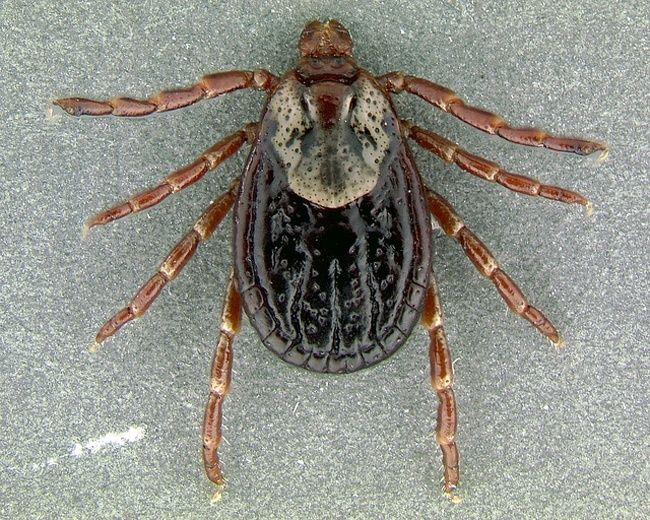

Foley said many tropical areas around the world have “terrible problems” with ticks. In the U.S. she identified Oklahoma, Kansas, and north Texas as especially susceptible. Dogs in these areas struggle. “It’s very difficult to find drugs that will protect a dog from ticks,” she said. “Sometimes you’ll see dogs coming into clinics with just thousands of ticks on them.”

Dr. Thomas N. Mather, also known as the TickGuy, serves as director of the University of Rhode Island’s TickEncounter Resource Center. He has focused his research on ecology, tick control strategies, tick-bite protection and disease prevention. The Resource Center is a web-based project that delivers information for everyday use, including research, FAQs, and prevention techniques.
This year is the second year of the center’s tick survey, known as Tick Spotters. Even with just two years of data, some trends are emerging.
Mather said that most people thought the recent “winter apocalypse” would have killed ticks on the East Coast. “Instead it seems to have left ticks pretty active this springtime, especially compared to last year,” he said.
“One trend that we’ve been noticing is that the American dog ticks in many places are far more abundant,” Mather added. “We’ve gotten I don’t know how many reports of people saying, ‘Well, I’ve lived in my spot for 15 years and this is the first year I’ve ever seen ticks. And I’m seeing hundreds of them.’ So that, to me, is something to take note of and just the sheer number of reports that we’ve been getting, especially of American dog ticks, suggests that that tick has had a little bit of an explosion this year.”
Besides the abundance of American dog ticks, another concern is the blacklegged tick, or deer tick. Mather described the species as “loaded with pathogens.” The CDC reports that the blacklegged tick transmits not only Lyme disease, but also anaplasmosis and babesiosis.
“We’ve already identified at least five fairly common pathogens in these ticks,” Mather said. “And an individual tick can be infected [with] probably all five of those pathogens at the same time, so that’s a problem really. The infection rate for the different pathogens differs, but most of those pathogens that are transmitted by blacklegged ticks are not transmitted by any other tick. So what we try to stress [is] it’s kind of important to not just brush a tick off until you know what it is because you have no idea what disease risk you might be at without knowing the type of tick.”
Mather called pathogenic issues in ticks a “smorgasbord of risk.”
Caution is probably better than fretful pandemonium. For example, having a tick crawling on one’s skin doesn’t mean the pathogen has spread. The tick would have to be “binding” in order to transmit, Mather said. The longer a tick is attached the more likely it has transmitted an infectious dose. The human immune system can diminish a small number of pathogens, the URI researcher added, but once the dose gets higher, transmission may occur.
“[For] Lyme disease, in general the tick has to be attached for over a day,” he said. “I’m sure it’s starting to transmit bacteria sooner, but it’s not an infectious dose typically … There’s been an awful lot of experiments done to show that most of the time there is at least a one-day window before an infectious dose of Lyme disease has been transmitted from a blacklegged tick. The Rocky Mountain spotted fever, rickettsia, can be transmitted much more rapidly, probably within the first 12 hours of tick attachment.”
The mystery of how the tick found its way onto Bear and another one ended up in the house isn’t a mystery at all. He was walking close enough to an area where ticks were present and the insects caught a ride on a host, full of fluffy fur and the promise of blood. It was an opportunistic jump from the natural world to a 100-pound canine. One could call it the circle of life, highlighting the amazing adventure of these spunky followers from the brush to the carpet of a suburban home, but the thought of those eight tiny legs and the possibility of pathogenic transmission are simply too creepy.
It’s tough not to think of these ticks as ticking time bombs, with more and more potential to explode in a warming climate.
YOU MIGHT ALSO LIKE
8 Ways to Keep Your Pet Flea Free

 233k
233k  41k
41k  Subscribe
Subscribe 